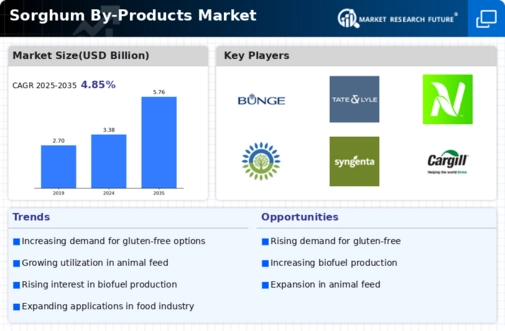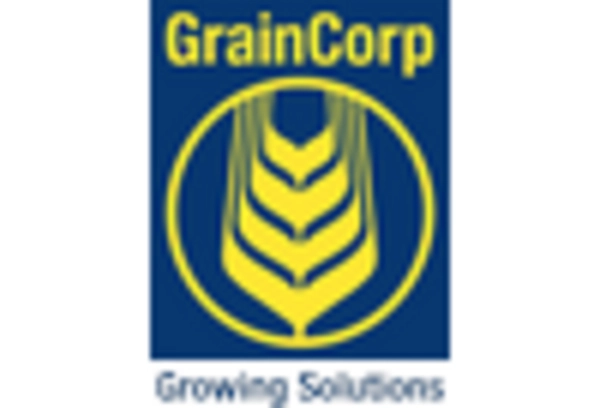Animal Feed Demand
The demand for animal feed is a significant driver for the Sorghum By-Products Market. Sorghum by-products, such as distillers grains and silage, are increasingly utilized in livestock feed due to their nutritional value and cost-effectiveness. As the global population continues to grow, the need for efficient animal protein production is becoming more pressing. Sorghum's adaptability to various climates and its ability to produce high-quality feed make it a viable option for livestock producers. Market trends indicate that the feed sector is expanding, which could lead to increased consumption of sorghum by-products. This trend may provide a substantial boost to the Sorghum By-Products Market, as stakeholders look to capitalize on the rising demand for sustainable and nutritious animal feed.
Biofuel Production
The burgeoning interest in renewable energy sources is likely to propel the Sorghum By-Products Market, particularly in the context of biofuel production. Sorghum is recognized for its high biomass yield and potential for conversion into biofuels, such as ethanol. As nations strive to reduce their carbon footprints and transition to cleaner energy alternatives, sorghum by-products are becoming increasingly relevant. The integration of sorghum into biofuel production processes not only enhances energy sustainability but also contributes to waste reduction by utilizing by-products that would otherwise be discarded. This dual benefit may attract investments and foster growth within the Sorghum By-Products Market, as stakeholders seek to align with global energy goals.
Health Consciousness
The rising awareness of health and nutrition among consumers is driving demand for sorghum by-products, which are perceived as healthier alternatives to conventional grains. Sorghum is gluten-free and rich in essential nutrients, making it an attractive option for health-conscious individuals. This trend is reflected in the increasing incorporation of sorghum by-products into various food products, such as snacks and cereals, catering to the growing market for gluten-free and nutritious foods. The Sorghum By-Products Market is likely to benefit from this shift, as manufacturers seek to meet consumer preferences for healthier options. Market data indicates that the demand for gluten-free products has been on the rise, suggesting a favorable environment for sorghum by-products.
Technological Innovations
Technological advancements in agricultural practices and processing techniques are likely to play a crucial role in shaping the Sorghum By-Products Market. Innovations such as precision agriculture and improved fermentation processes can enhance the efficiency of sorghum production and the quality of its by-products. For instance, the adoption of biotechnology in sorghum cultivation may lead to higher yields and better resistance to pests and diseases. Additionally, advancements in processing technologies can facilitate the extraction of valuable components from sorghum, such as proteins and fibers, thereby increasing the market's appeal. As these technologies continue to evolve, they may significantly influence the competitive landscape of the Sorghum By-Products Market, attracting new players and investment.
Sustainability Initiatives
The increasing emphasis on sustainability appears to be a pivotal driver for the Sorghum By-Products Market. As consumers and businesses alike prioritize eco-friendly practices, the demand for sorghum by-products, which are often produced with lower environmental impact compared to traditional crops, is likely to rise. This shift is evidenced by the growing interest in sorghum as a drought-resistant crop, which can thrive in arid conditions, thus reducing water usage. Furthermore, the utilization of sorghum by-products in biofuels and biodegradable materials aligns with global sustainability goals, potentially enhancing market growth. The Sorghum By-Products Market may witness a surge in investment as stakeholders seek to capitalize on this trend, fostering innovation and expanding product offerings.


















Leave a Comment